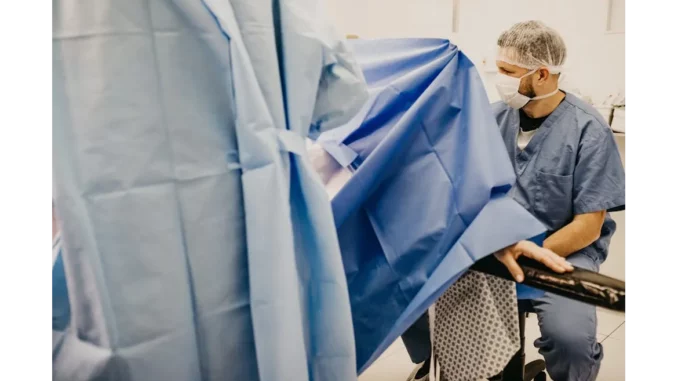
In a recent interview, I had the privilege of speaking with Dr. Sarah Collins, an esteemed obstetrician at the University Hospital of Leicester. Our discussion centred around a remarkable AI-based software that promises to transform the landscape of childbirth. Seamlessly integrating with existing ultrasound technology, this innovative tool is designed to provide precise, real-time guidance during delivery, offering the potential to revolutionise the field of obstetrics.
Dr. Collins, who brings over a decade of experience in her field, candidly shared her initial scepticism towards the use of artificial intelligence in delivery rooms. “When I first encountered the concept of AI in childbirth, I was both intrigued and cautious. The idea of technology altering something as fundamentally human as childbirth was both fascinating and daunting,” she admitted. However, her perspective shifted as she witnessed the software’s capabilities firsthand.
The development of this pioneering software, overseen by Professor Tullio Ghi, has been rigorously validated through extensive research. It employs a straightforward traffic light system to guide medical professionals: green suggests proceeding with natural descent, yellow advises caution, and red signals the need for reconsideration, potentially indicating a shift to an emergency caesarean. “It’s akin to having a seasoned expert offering a second opinion on the spot,” Dr. Collins noted. This system not only enhances decision-making but also alleviates some of the inherent pressures faced by practitioners.
One of the critical challenges in obstetrics is the manual assessment of fetal head position, which, despite years of experience, can carry a margin of error. Dr. Collins highlighted this difficulty, noting, “Manual assessments can be fraught with uncertainty, and the repercussions of an incorrect judgement are significant. While ultrasound offers greater accuracy, not all practitioners are proficient in its use.” The AI software effectively bridges this gap by interpreting ultrasound images with striking precision. Demonstrating a 94.5% accuracy rate in classifying fetal head positions, the software surpasses traditional manual assessments, providing a level of reassurance that is invaluable in high-stakes situations.
The real-time decision-making capabilities of the software have sparked curiosity about its impact on delivery room dynamics. Dr. Collins explained the intuitive nature of the traffic light system: “Green signifies it’s safe to proceed, yellow prompts caution, and red suggests reevaluating the situation, possibly leading to a caesarean. It’s a simple yet profoundly reassuring system.” Beyond facilitating delivery decisions, Dr. Collins sees this technology as a potential mitigator of risks associated with prolonged labour and fetal distress. By accurately determining the appropriate moments for interventions like vacuum extraction, the software not only improves outcomes but also minimises the physical strain on mothers.
Despite the promising prospects, the journey to integrate this technology into routine practice is ongoing. Scheduled for availability in delivery rooms by 2028, the software awaits further validation across larger patient groups. Dr. Collins expressed optimism about its future, stating, “The preliminary results are encouraging, and with sustained support, this tool could become a staple in maternity wards worldwide.”
The development of this software is a testament to the power of global collaboration, involving contributions from the Clinical Physiology Institute of the Italian National Research Council and the Obstetrics Clinic at the University of Parma. Dr. Collins reflected on this international partnership, saying, “It’s truly heartening to witness such global collaboration. The collective commitment within the medical community to advance maternal and neonatal care is inspiring.”
As our conversation drew to a close, I asked Dr. Collins about any reservations she might have regarding the new technology. After a thoughtful pause, she remarked, “Every new technology presents a learning curve. Training practitioners to trust and effectively utilise the software will be essential. However, I am confident that this represents a significant step forward in making childbirth safer and more predictable.”
Reflecting on our discussion, it is evident that this AI-based software marks a monumental leap in obstetric care. It exemplifies not only the integration of technology into healthcare but also the enhancement of decision-making during one of life’s most critical moments. As we anticipate its implementation in 2028, it is clear that the future of childbirth is poised to be brighter and more precise, guided by the advancements of artificial intelligence.


Be the first to comment